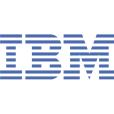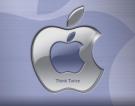 Ariba, Inc. (Nasdaq: ARBA), the leading spend management solutions provider, has set a new standard for software delivered as a service. With the latest release of its on-demand spend management solutions, Ariba provides a full suite of enterprise-class offerings that can be quickly, easily and cost effectively deployed by companies of all sizes across functions to achieve fast, measurable results.
Ariba, Inc. (Nasdaq: ARBA), the leading spend management solutions provider, has set a new standard for software delivered as a service. With the latest release of its on-demand spend management solutions, Ariba provides a full suite of enterprise-class offerings that can be quickly, easily and cost effectively deployed by companies of all sizes across functions to achieve fast, measurable results."For years, enterprise-class spend management was confined to on-premise, customized solutions, which only large companies could afford to purchase and deploy," said Alex Moissis, Vice President, Solutions Management, Ariba. "With the latest release of Ariba’s on-demand solutions, large and growing organizations alike can access a full range of applications on-demand that enable them to manage their spend from end-to-end and deliver bottom-line results."
According to the Supply Management Market Sizing Report 2006-2011 published by AMR Research, "alternative deployment (on-demand) models continue to be the largest growth driver of the supply management market..." And as noted in "Supply Management: A Market Update" issued by AMR Research on February 25, 2008, "Landing Procuri made Ariba the largest on-demand provider in supply management, giving it a whopping 50% of the market share."
More Value, More Quickly
A unique combination of technology, category expertise and services delivered in a single, integrated platform, Ariba’s on-demand spend management solutions require no investment in hardware or lengthy implementations. "With Ariba, companies can be up and running along the path to spend management excellence in weeks, not months or years," Moissis said. In addition, Ariba's solutions deliver low cost integration with ERP systems, allowing companies to accelerate and increase returns on their investments.
Expanded Reach and Impact
Enterprise-class features embedded across Ariba’s latest on-demand release, coupled with ease of use and deployment enable organizations of all sizes to expand the reach and impact of spend management across markets, functions and spend owners.
"Traditional installed software approaches once limited spend management savings to the procurement groups within large enterprises," said Tim Minahan, Chief Marketing Officer, Ariba. "With its latest on-demand release, Ariba delivers enterprise-class spend management functionality and expertise that enables companies of all sizes to drive savings in new functional areas, such as finance and legal and include a broader range of spend owners, such as marketing, human resources, and IT to increase and accelerate results."
Comprehensive Contract Management
Negotiating and managing contracts is an enterprise-wide activity that extends far beyond procurement. With enhanced buy and sell-side capabilities, Ariba® Contract Management™ enables companies to collaboratively create and manage contracts across categories and functions, including sales, marketing, real estate, legal, procurement and IT. Active compliance tools help organizations move beyond basic authoring and document archiving to drive compliance and achieve full value of their contracts regardless of their backend procurement or ERP systems.
Network-Driven Collaboration and Financing
In turbulent economic times, it is more critical than ever that buyers and suppliers work together to ensure the stability and health of their operations. To drive such collaboration, Ariba now provides direct access to third-party financing solutions from Orbian through the Ariba Supplier Network™. Leveraging the solutions, buying organizations can achieve cost savings or better trade terms and suppliers can receive certainty of payment timing and amount. And with enhanced discount management tools embedded in the network, suppliers can more effectively manage cash receivables by offering incentives to key trading partners for early payment. With more than 160,000 registered suppliers in 115 countries engaging in transactions worth more than $100 billion a year, the Ariba Supplier Network is one of world’s largest open business transaction networks. Through Ariba Supplier Connectivity™, companies using ERP and other non-Ariba procurement applications can seamlessly connect to the network and reap the benefits that it provides.
Complex Services Procurement
Companies are increasingly pursuing bottom-line savings through effective management of a broad range of services. Through services-specific, best-practice processes built into Ariba Services Procurement™, companies of all sizes can dramatically automate key steps in the spend management process, increase internal compliance to negotiated contracts in complex services, reduce costs and ultimately increase the amount of spend they capture and manage. Delivered on-demand as a service, the solution can be easily integrated with ERP and other third-party procurement applications, enabling companies to maximize IT investments and spend management results.
Deep Procurement Content
Ariba Procurement Content™ allows companies to access a single source of content
for all commodities through an easy-to-use search interface. A unique, end-to-end combination of proven technology, extensive domain expertise and expert services, Ariba Procurement Content enables companies to quickly drive procurement compliance across categories regardless of the specific applications they are using. Delivered on a subscription basis, Ariba Procurement Content is system neutral and eliminates the challenges of point-to-point integration, multiple data formats, managing content and ensuring contract compliance.
Robust Travel & Expense Compliance
Tighter Sarbanes-Oxley and New York Stock Exchange guidelines regarding the reporting of gift and entertainment expenses for non-employees have a growing number of companies struggling to bring themselves into compliance. Through new reporting features included in Ariba Travel and Expense™, companies can track the purchase of gifts and other physical items to customers, prospects, or other non-company individuals along with expenses for entertainment of them. Data can be easily accessed and shared across departments to ensure standardization and accuracy of reporting.
Availability
Ariba's on-demand spend management solutions are available and in use today. To learn more about how your organization can leverage these solutions to improve profits, reduce risk and gain competitive advantage, visit: www.ariba.com
About Ariba, Inc.
Ariba, Inc. is the leading provider of spend management solutions to help companies realize rapid and sustainable bottom line results. Successful companies around the world in every industry use Ariba Spend Management™ software and services. Ariba can be contacted in the U.S. at 1.650.390.1000 or at www.ariba.com.






